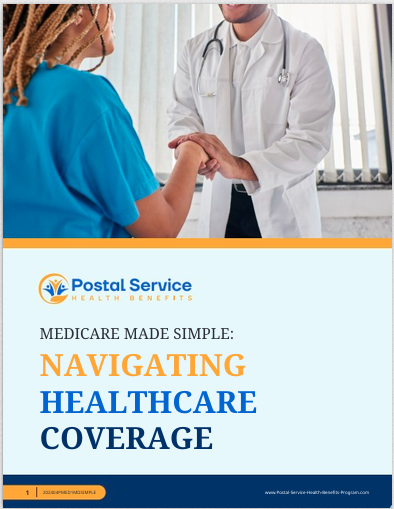Key Takeaways
- The Postal Service Health Benefits (PSHB) program could offer postal workers a more tailored and sustainable healthcare solution, addressing specific needs not covered by previous options.
- Understanding the long-term benefits of PSHB is crucial for postal workers as they navigate their healthcare options, ensuring they make informed decisions for their future.
How PSHB Might Just Be the Long-Term Health Solution Postal Workers Need
The health insurance landscape is rapidly evolving, especially for postal workers who have long relied on the Federal Employees Health Benefits (FEHB) program. The introduction of the Postal Service Health Benefits (PSHB) program marks a significant shift, offering a more tailored approach to healthcare coverage specifically designed for postal employees. This program is poised to address some of the unique challenges faced by this workforce, providing a more sustainable and effective long-term health solution.
The Evolution of Postal Workers’ Healthcare
For decades, postal workers have been covered under the FEHB program, which provides a broad array of health plans available to federal employees. However, this system, while comprehensive, is not without its limitations. Postal workers, who face unique occupational hazards and health challenges, often found that their specific needs were not fully addressed under the existing plans. The PSHB program was established to rectify these issues by creating a more specialized healthcare system that could cater to the particular demands of postal workers.
The PSHB program is expected to streamline healthcare delivery and potentially reduce costs by leveraging the buying power of postal employees, separate from other federal workers. This change represents not just a shift in the administrative structure but also a realignment of health benefits to better meet the needs of postal workers, especially as they age and their health needs become more complex.
How Does PSHB Differ from FEHB?
One of the key differences between the PSHB and the FEHB programs is the focus on postal workers’ specific health concerns. The PSHB program is designed to be more responsive to the physical and mental demands associated with postal work. It offers plans that emphasize preventive care, mental health services, and chronic disease management—areas where postal workers may require more specialized care due to the nature of their jobs.
The PSHB also aims to provide more cost-effective options by eliminating some of the inefficiencies that arose from the one-size-fits-all approach of the FEHB. By narrowing the focus to postal employees, the PSHB can negotiate better terms with healthcare providers, potentially resulting in lower premiums and out-of-pocket costs for participants. Additionally, the program is expected to simplify the selection process by offering plans that are more relevant to the postal workforce, making it easier for employees to choose coverage that truly meets their needs.
The Long-Term Benefits of PSHB for Postal Workers
The long-term benefits of the PSHB program for postal workers are substantial. As the program matures, it is expected to provide more consistent and predictable healthcare costs, which is crucial for both current employees and retirees. This predictability is particularly important given the rising healthcare costs and the financial challenges that many postal workers face upon retirement.
Another significant benefit of the PSHB program is its focus on preventive care. By encouraging regular health screenings, vaccinations, and wellness programs, the PSHB aims to reduce the incidence of serious health issues among postal workers. This proactive approach not only improves the overall health of employees but also reduces the long-term costs associated with chronic conditions.
Moreover, the PSHB program is likely to include enhanced mental health services, recognizing the stressful nature of postal work. This could lead to better mental health outcomes for employees, which in turn can improve productivity and reduce absenteeism. Over time, this could also lead to lower healthcare costs for both employees and the program as a whole, as early intervention in mental health issues can prevent more severe and costly conditions from developing.
Addressing Retirement Concerns with PSHB
Retirement health benefits are a significant concern for postal workers, who often face uncertainty regarding their healthcare coverage as they transition out of active employment. The PSHB program is designed with this in mind, offering retirees a more stable and predictable option for their post-retirement years. Unlike the FEHB program, which pools postal retirees with a broader group of federal retirees, the PSHB program specifically targets the needs of postal retirees, potentially offering more relevant coverage options.
This focus on retiree health benefits could also alleviate some of the financial pressures associated with retirement. By providing plans that are better aligned with the typical health needs of aging postal workers, the PSHB program can help retirees avoid the often complex and confusing process of navigating Medicare and supplemental insurance plans. This can lead to better health outcomes and a higher quality of life in retirement.
The Role of PSHB in Promoting Health Equity
Health equity is a growing concern in the United States, and the PSHB program has the potential to make significant strides in this area. Postal workers, particularly those in rural or underserved areas, have historically faced barriers to accessing quality healthcare. The PSHB program, by tailoring its offerings to the specific needs of postal workers, can help bridge some of these gaps.
By offering plans that include comprehensive coverage for telehealth services, for example, the PSHB program can ensure that postal workers in remote areas have access to the care they need without having to travel long distances. Additionally, the program’s emphasis on preventive care and chronic disease management can help address some of the health disparities that exist within the postal workforce, particularly among older employees and those with preexisting conditions.
Navigating the Transition to PSHB
Transitioning from the FEHB to the PSHB program will require careful planning and communication. Postal workers will need to be well-informed about the changes and how they will impact their healthcare coverage. Education will be key in this process, with clear and accessible information provided to all employees to help them make informed decisions.
It is also important that postal workers understand the timelines for transitioning to the new program, including any enrollment periods or deadlines. This will help ensure that no one experiences a lapse in coverage during the transition. The PSHB program administrators will need to work closely with unions, employee groups, and other stakeholders to ensure a smooth and successful transition.
Potential Challenges and Considerations
While the PSHB program offers many potential benefits, it is not without challenges. One of the primary concerns is how the program will be funded and whether it will remain financially viable in the long term. Given the rising costs of healthcare, there is always a risk that premiums and out-of-pocket costs could increase over time, potentially eroding some of the program’s benefits.
Another consideration is how the program will address the diverse needs of the postal workforce. While the PSHB program is designed to be more targeted than the FEHB, postal workers still have a wide range of health needs based on factors like age, location, and job duties. Ensuring that the program remains flexible and responsive to these diverse needs will be crucial to its success.
A Step Toward a Healthier Workforce
The introduction of the PSHB program represents a significant step forward in addressing the healthcare needs of postal workers. By providing more tailored, cost-effective, and comprehensive coverage, the PSHB program has the potential to improve the health and well-being of postal employees both during their careers and into retirement. As the program continues to evolve, it will be important to monitor its impact and make adjustments as needed to ensure that it delivers on its promise of a healthier future for postal workers.
Looking to the Future with PSHB
As postal workers transition to the PSHB program, there is a strong sense of optimism about the potential benefits it can offer. With a focus on preventive care, mental health services, and better alignment with the unique needs of postal workers, the PSHB program could very well be the long-term health solution that this essential workforce needs. As the program is implemented, it will be important for postal workers to stay informed and engaged, ensuring they make the best choices for their health and well-being.
Contact Information:
Email: [email protected]
Phone: 1816588326





